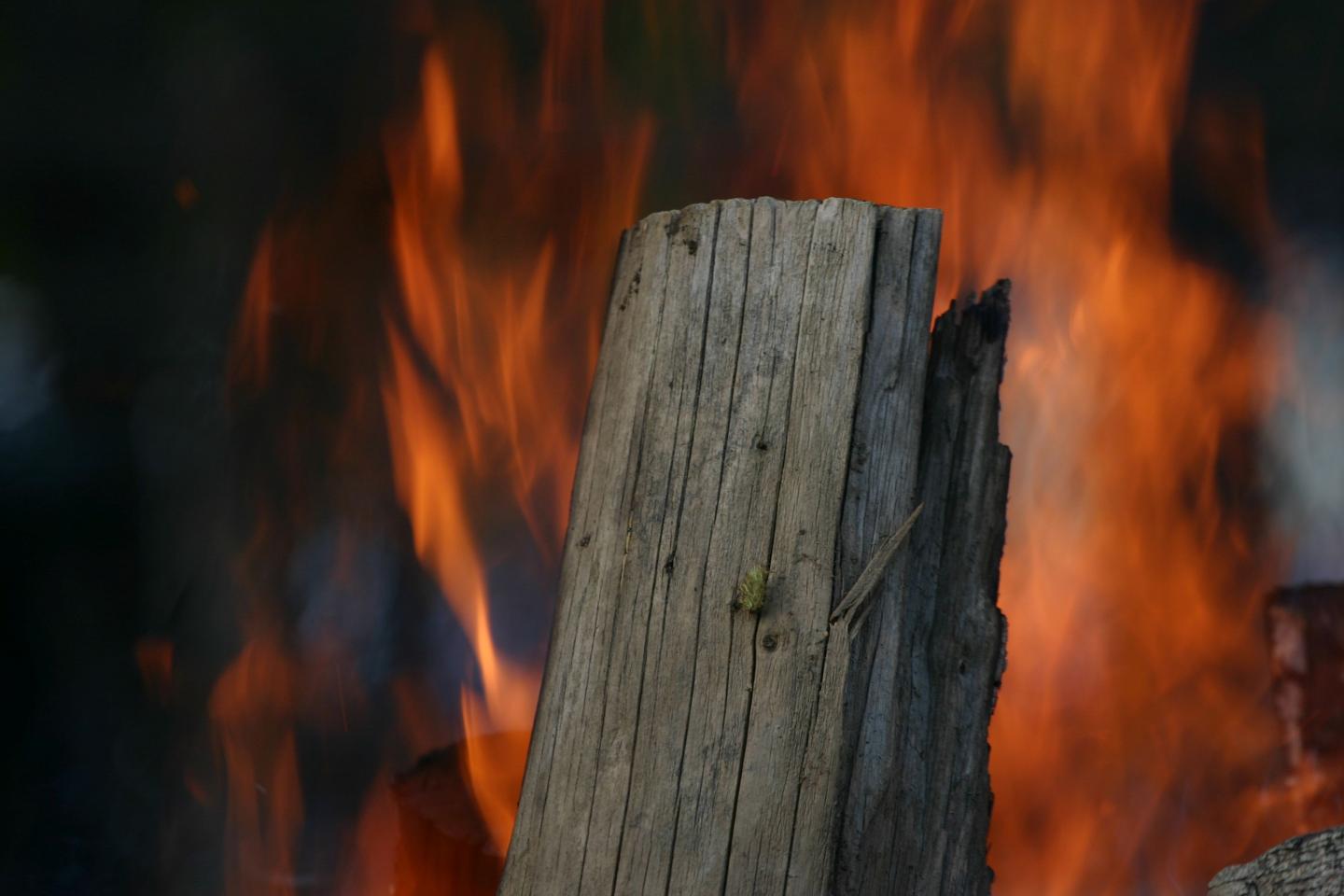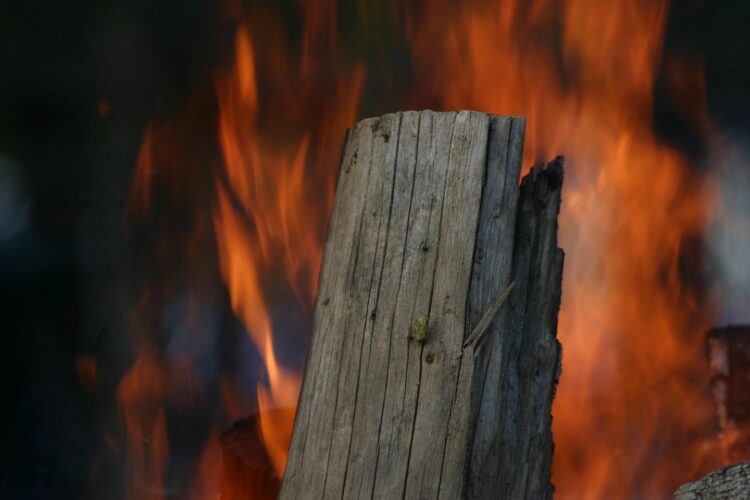Cross-institute project to understand the dynamics of forest fires and mitigate the risk

Credit: Photo: Gabi Zachmann, KIT
Long-lasting drought increases the risk of forest fires. In the past two years, many sometimes large forest fires developed in Germany. However, the forestry sector and fire departments are still lacking knowledge to successfully cope with forest fires. Scientists of Karlsruhe Institute of Technology (KIT) are studying how threatened areas can be detected, the fire risk can be reduced, and burnt forests can be reforested sustainably. The project is funded with about EUR 1.5 million by the Fachagentur Nachwachsende Rohstoffe (central project-coordinating agency in the area of renewable resources).
In 2018, 2349 hectares of forest were destroyed by fires in Germany. According to forest fire statistics of the Federal Office for Agriculture and Food, the total burnt area corresponded to nearly 3,300 football fields. The resulting forest damage has been largest since 26 years. Dr. Fabian Faßnacht of KIT’s Institute of Geography and Geoecology (IFGG) therefore proposed the interdisciplinary project “Erweiterung des ökologischen, waldbaulichen und technischen Wissens zu Waldbränden (ErWiN)” (enhancing ecological, forest-specific, and technical knowledge on forest fires) to better counteract this danger in future. According to latest climate prognoses, drought periods will occur more often in future, which might cause the number of forest fires to further increase.
Simulations to Understand Fire Dynamics
In the first part of the project starting in June 2020, researchers will transfer already existing fires propagation models to German conditions. Simulations of forest fires in the USA or the Mediterranean will be used as a basis. “In the past, central European forests were not so much affected by fires. For this reason, propagation of fire has hardly been analyzed systematically in these regions,” Faßnacht says. Fire dynamics, for instance, is influenced by soil properties, light transmittance of treetops, and weather. The team also plans to develop a classification of existing burning materials. “A thick tree trunk, for example, does not start to burn as quickly as dry leaves,” Faßnacht explains. The database for this work will be made available by the Thünen Institute of Forest Ecosystems.
Based on scenarios, Faßnacht and his team will then analyze measures to efficiently reduce the risk of a fire. These may include the cutting of firebreaks or the planting of certain tree species. “Even if no fire expert will be present on site, our results will enable scientific assessment of the situation and taking of appropriate actions,” Faßnacht says. The Institute for Fire Fighting in North Rhine-Westphalia, for instance, plans to incorporate the findings of the KIT researchers in a guideline for action strategies in case of forest fires and to prepare a list of the fire fighting equipment required for this purpose.
Different Tree Species Make the Forest more Robust
In the second part of the project, scientists will collect data on the burnt forest areas in Brandenburg. This federal state is affected most by forest fires in Germany. Dr. Somidh Saha from KIT’s Institute for Technology Assessment and Systems Analysis (ITAS) will study how different tree species regenerate after a fire at different places. “We want to find out whether and after which time trees form new shoots and how strong they still are,” Saha says.
The researcher will also collect seeds on the burnt areas. Together with Dr. Nadine Rühr from the Atmospheric Environmental Research Division of KIT’s Institute of Meteorology and Climate Research (IMK-IFU), he will carry out germination tests at a high-tech greenhouse on Campus Alpine in Garmisch-Partenkirchen. In a second experiment, undamaged seeds of the ten most abundant tree species in Germany will be exposed to simulated fires. “After we will have buried the seeds in the ground, we will expose them to various temperature levels corresponding to those of small or medium fires,” Saha says. “We want to find out which seeds are still able to germinate after the heat treatment.” As fallow lands after a forest fire are exposed to higher solar irradiation due to lacking shading, the dark burnt ground will heat up more strongly. For this reason, resistence of the seedlings to heat and drought stress will be determined.
All findings will enable the team to determine how the different tree species recover and reproduce after a fire. This fundamental knowledge may then be used by the forestry sector for future forest management to increase forest resilience. “It is generally known that mixed forests survive a fire much better than monocultures,” Saha says. It will therefore be very important to find out which combination of tree species in Germany is most suited for reducing the risk of large forest fires.
###
More about the KIT Climate and Environment Center: http://www.
Press contact: Carola Mensch, Press Officer, Phone +49 721 608-21170, Email: [email protected]
Being “The Research University in the Helmholtz-Association,” KIT creates and imparts knowledge for the society and the environment. It is the objective to make significant contributions to the global challenges in the fields of energy, mobility and information. For this, about 9,300 employees cooperate in a broad range of disciplines in natural sciences, engineering sciences, economics, and the humanities and social sciences. KIT prepares its 24,400 students for responsible tasks in society, industry, and science by offering research-based study programs. Innovation efforts at KIT build a bridge between important scientific findings and their application for the benefit of society, economic prosperity, and the preservation of our natural basis of life. KIT is one of the German universities of excellence.
This press release is available on the internet at http://www.
The photo in the best quality available to us may be downloaded under http://www.
Media Contact
Monika Landgraf
[email protected]
Original Source
https:/






